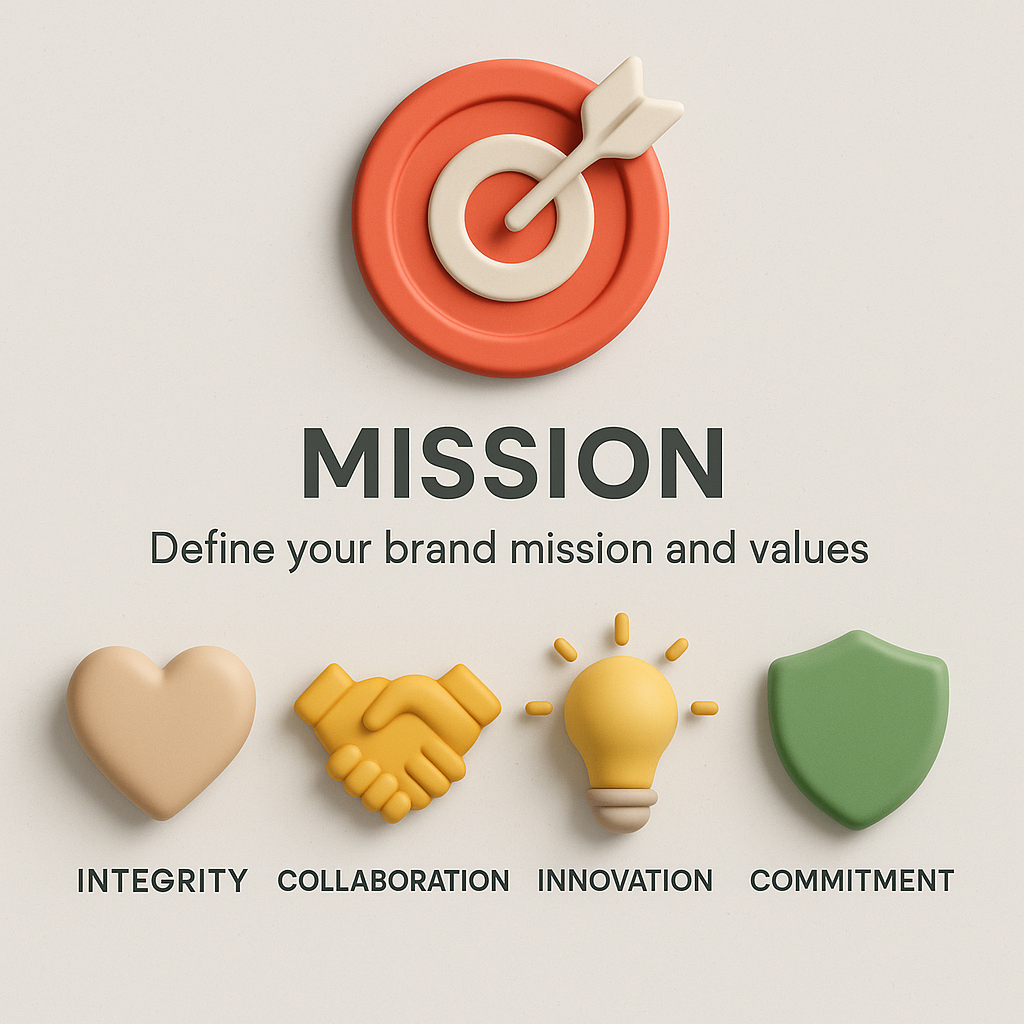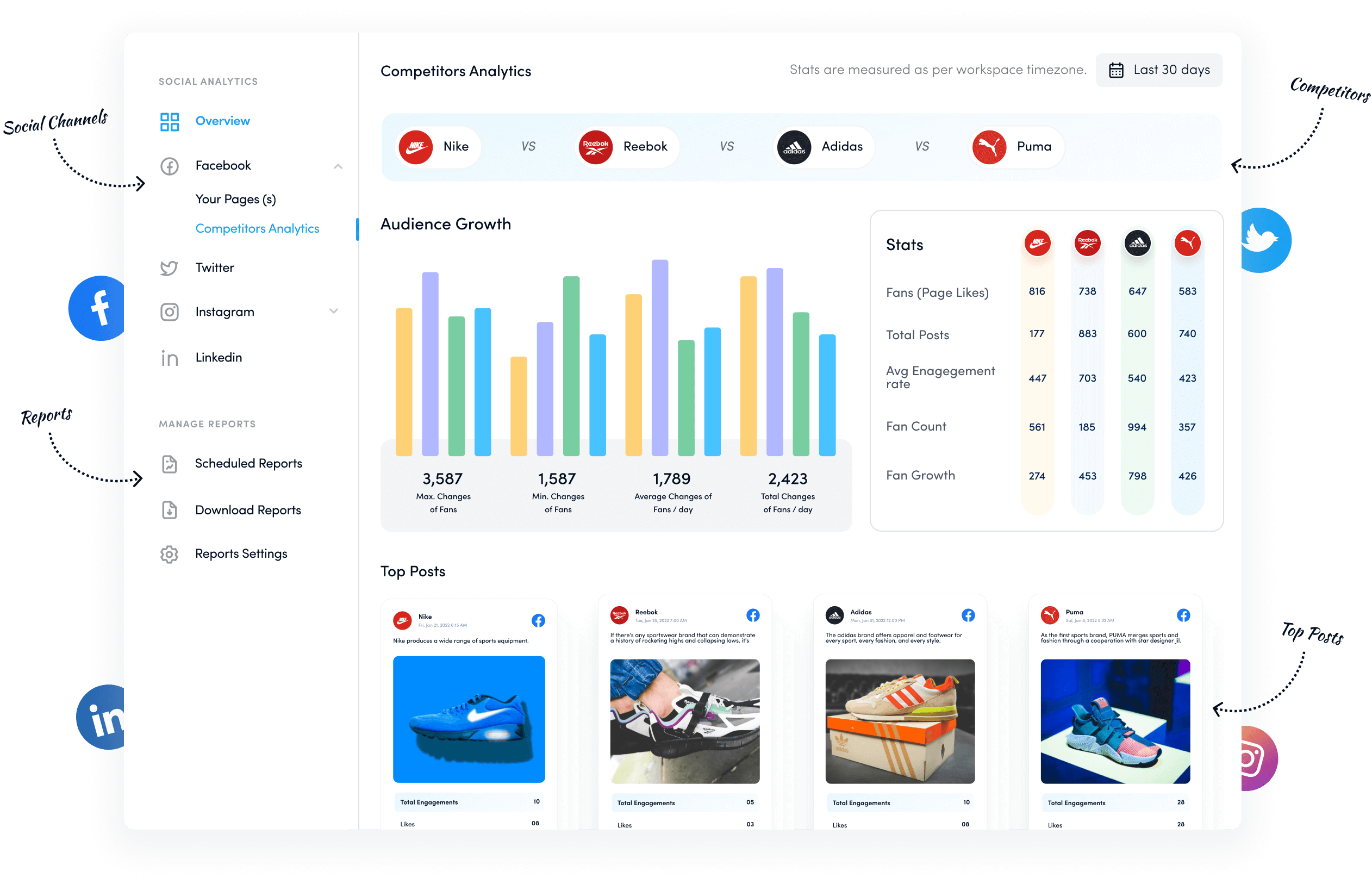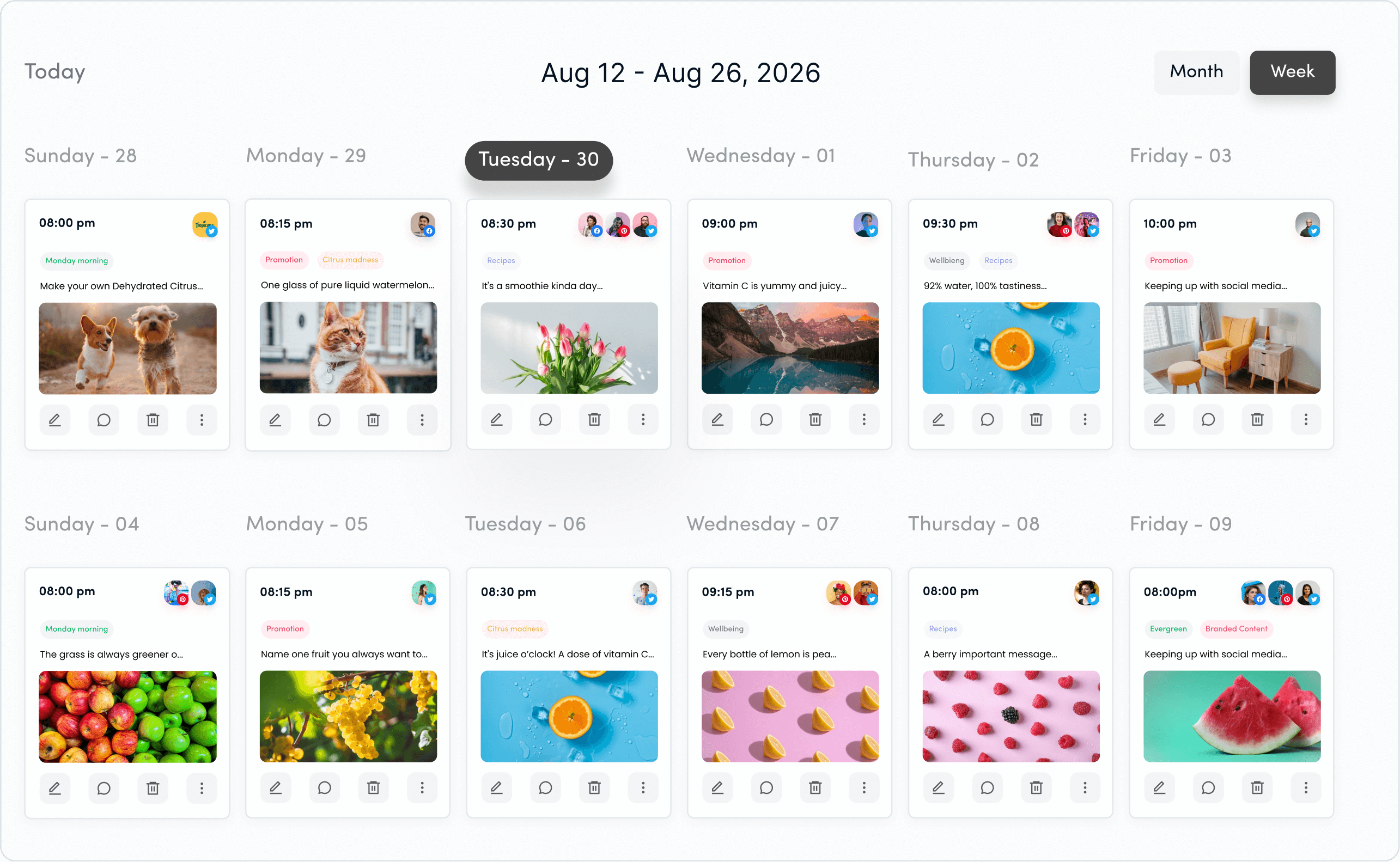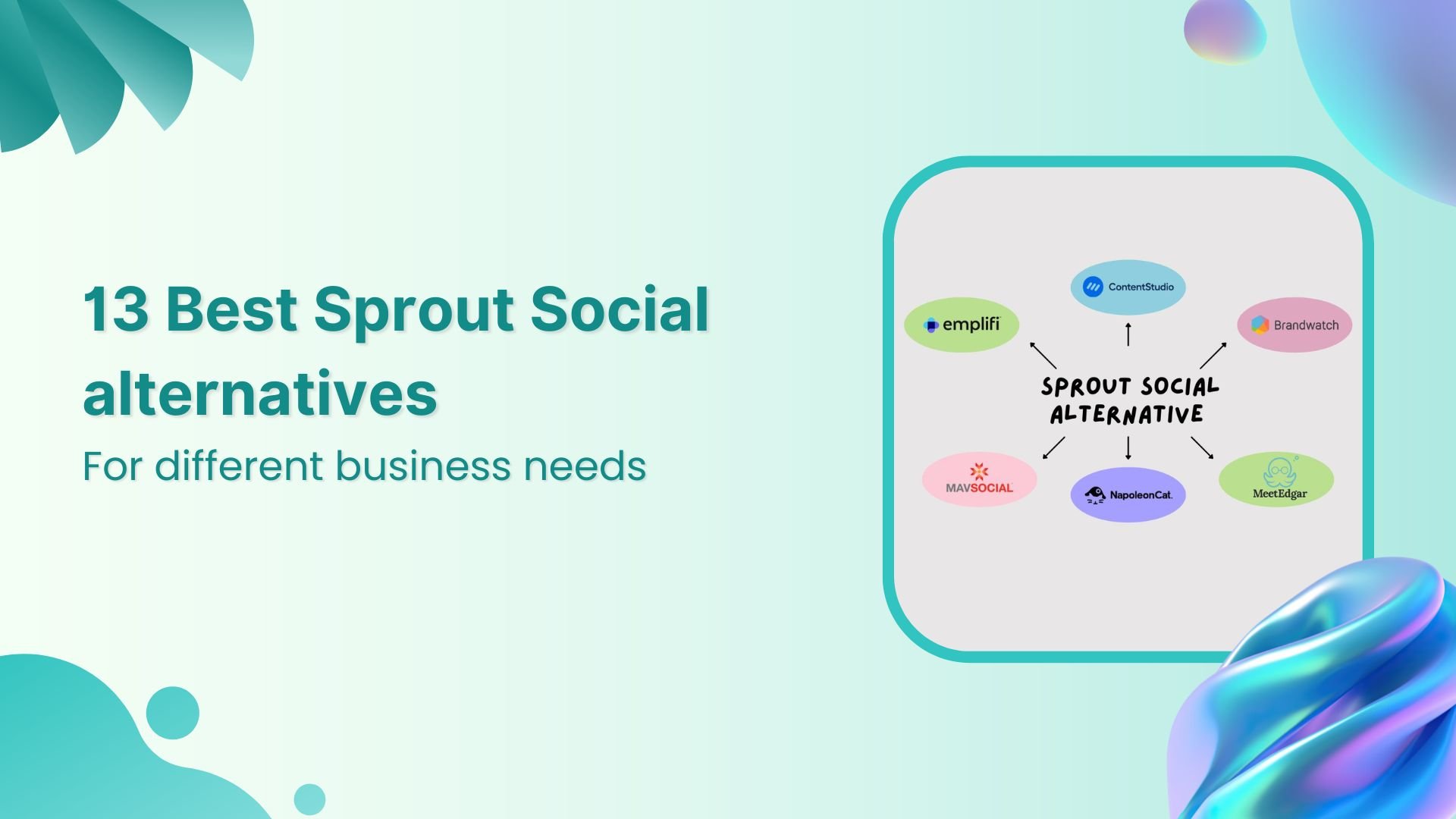Bulk-generate & schedule posts in seconds with Smart Scheduling. Try now!
Content pillars for social media: How to create and use them

Social media content creation can easily become scattered without a clear focus. Content pillars offer a solution by defining the core themes your brand or profile consistently covers. By narrowing your topics to a few key pillars, you ensure every post is on-brand, purposeful, and relevant to your target audience.
A well-defined set of pillars keeps messaging consistent & cohesive across platforms. The following sections explore what content pillars are, why they matter, and how to develop and use them effectively, with step-by-step guidance and examples for various social media roles.
The easiest way to manage and grow your social channels.
Try ContentStudio for FREE
What are content pillars for social media?
Content pillars for social media are the primary themes or broad topics that shape all of your content. They act as the foundation of your social media strategy, keeping content creation focused and aligned with your brand’s values and goals. Each pillar represents a significant topic area relevant to your business and audience, and any piece of content you post should fall under one of these pillars.
Typically, brands choose about three to five content pillars to cover their key topics without diluting focus.
For example, productivity platform Asana uses clear pillars on its Instagram, including:
- Product updates (e.g., request tracking)
- Customer education (e.g., content marketing tips)
- Industry insights (e.g., AI and IT trends)
- Community engagement (e.g., productivity hacks)
- Fun, relatable content (e.g., astrology-themed posts)
Consistent posting within these pillars reinforces Asana’s position as an authority in workplace productivity and collaboration.

Why are social media content pillars important?
Establishing content pillars provides several benefits for your social media strategy. Here are five key reasons why defining content pillars is so important:
1. Structured content planning
Content pillars bring order to your social strategy by categorizing posts into key themes. Such an approach simplifies planning and scheduling because you know exactly what general topics to cover.
By mapping content to pillars in a calendar, you maintain a steady flow of relevant posts without scrambling for ideas. It also prevents overemphasizing one topic, you can balance your content mix so all major themes get attention. The result is a more organized and predictable posting schedule that still feels fresh and varied.
When a new social media trend or content idea pops up, you can quickly decide if it fits under one of your pillars (and thus is on-brand) or if it’s off-topic and better left out.
Social Media Content Calendar
Stay consistent and organized with Contentstudio’s social media content calendar for marketers and agencies.
Get Started for FREE
2. Consistent brand voice and identity
When your content revolves around defined pillars, your messaging stays cohesive across platforms. Maintaining consistency reinforces your brand identity and makes your content more recognizable to followers. Without clear pillars, a brand might veer into unrelated posts that confuse the audience.
Content pillars act as guardrails, ensuring every post aligns with your brand’s tone and perspective. This unified approach helps people remember your brand and trust it, since they repeatedly see messages that match your core identity.
For instance, if your brand is known for a playful tone, you won’t suddenly post in a dry, formal style, your pillars keep the style and topics in check.
3. Value-driven, audience-focused content
Pillars ensure you consistently deliver content that matters to your audience. Each pillar is chosen for its relevance to your audience’s interests or pain points, so posts are informative and useful rather than filler. Focusing on defined themes, positions your brand as a trusted source of valuable insights, which encourages higher engagement and loyalty.
Additionally, social platforms categorize content by topic; sticking to your pillars (and related keywords) can improve your visibility in searches and feeds for those topics.
For example, a travel brand that always shares destination guides, packing tips, and cultural stories will become known as a reliable resource for travellers. Providing that kind of consistent value means followers are more likely to keep coming back and to trust your recommendations.
4. Efficiency in content creation
Having set pillars streamlines your content brainstorming and production process. It’s easier to generate post ideas when you know the buckets they should fit into, reducing time spent figuring out what to post.
Many creators find that pillars provide a constant source of inspiration, so you face fewer creative blocks and can maintain consistency even on a busy schedule.
Over time, you can build a content “idea bank” for each pillar, ensuring you always have material to draw from. This structured process cuts down on content fatigue and keeps your pipeline full.
It also simplifies teamwork: if you have multiple content creators, each can take ownership of a pillar or theme they excel at. That approach streamlines collaboration and ensures accountability for covering every pillar.
5. Long-term strategy and measurability
Content pillars provide a strong foundation for a long-term social media strategy. They keep your content focused on core themes even as trends change, making it easier to adapt while staying on brand. Such pillars also make it easier to track what works for you so you can measure engagement per pillar to see which themes drive growth.
For example, if posts under a “How-To” pillar consistently get the most shares, you might double down on educational content. If a pillar isn’t resonating, you can pivot or replace it without derailing your overall strategy. This makes your content plan more resilient and data-driven.
How to create content pillars for social media
Developing effective content pillars requires understanding your brand and audience, then planning your content accordingly. Follow these six steps to create and use content pillars in your social media strategy:
1. Define your brand mission and values
Start by clarifying your brand’s mission and core values. Having a clear understanding of your mission gives you a starting point for choosing your pillars and ensures they align with your overall business goals.

Ask yourself foundational questions like:
- Why your brand exists?
- What makes it unique?
- What you want to achieve (beyond selling products)?
Use these answers to craft a one-sentence mission statement if you haven’t already.
Then, outline your top brand values (e.g., innovation, affordability, community). Your content pillars should reflect those traits so that everything you post feels authentic to your brand.
For example, if innovation is one of your core values, you might decide that one content pillar will highlight new advances or creative ideas in your industry, ensuring your content truly reflects that innovative spirit.
2. Identify your target audience and needs
Next, research your target audience and develop a clear picture of your ideal follower or customer. Understand their demographics, interests, and pain points – essentially, create detailed social media personas.

Think about the problems your product or service solves and who benefits most from your offering. This will guide your pillar themes.
For example, if you sell premium coffee subscriptions for busy professionals, you know convenience and quality matter to them. Your pillars could then include topics like “quick coffee hacks for busy mornings” or “workday productivity rituals” to speak directly to those needs.
3. Research and brainstorm content topics
With your brand and audience in mind, brainstorm potential content themes. List all the topics related to your niche or industry that might interest your audience. Then use keyword research to discover what specific subjects people are searching for; popular search queries can signal high-interest topics worth covering.

Also, analyse your competitors’ content performance to spot gaps or ideas you can capitalize on. If certain topics are trending in your industry, consider whether they fit your brand. A pillar should be something you can talk about with authority and relevance over the long term. Aim for themes that are broad enough to yield many posts, yet specific enough to connect with your target audience.
4. Select and define your content pillars
From your brainstorm, choose the 3–5 strongest themes to become your content pillars. Each pillar should align with both your brand identity and your audience’s interests. Give each pillar a clear name (like “DIY Tutorials” or “Customer Spotlights”) and write a brief description of what it covers and why it’s valuable to your audience.

It can help to note what content formats you’ll use for each pillar. For example, you might plan videos and infographics for an educational pillar. Also, list a few example subtopics or content calendar ideas under each pillar. Defining your pillars in this way creates a roadmap that will guide content creation going forward.
5. Plan and create quality content for each pillar
Now begin developing content under each pillar and build a content calendar to keep your efforts consistent. Decide how often to post from each pillar (e.g. Pillar A on Mondays, Pillar B on Tuesdays, etc.) to ensure a balanced rotation. Consistency is key to building momentum with your audience, so schedule posts in advance if possible.
As you create content, maintain high-quality standards: stick to your brand’s voice and visual style, provide accurate information (do your research for educational posts), and offer value in every piece. Whenever you find a great content idea, consider repurposing it across platforms – for instance, turn a long video into short-form content, or transform a blog post into an infographic.
6. Measure results and refine your pillars
Finally, track how your content is performing and adjust your pillars or strategy as needed. Use analytics tools to monitor engagement metrics (likes, shares, comments, click-throughs) for your posts, and group these insights by content pillar.
Identifying which pillars drive the most social media engagement will show you where to focus more energy. Likewise, if a particular pillar isn’t resonating, consider tweaking your approach or even replacing that pillar.
Keep an eye on competitors as well , if they’re succeeding with a topic you haven’t covered, it might be worth incorporating. Regular review allows you to refine your content mix over time. The goal is continuous improvement: double down on what works and evolve or drop what doesn’t, so your pillar strategy stays effective as your business and audience grow.
Social Media Analytics
Fine-tune your social media strategy for success with in-depth analytics and white-labeled reports.
Get Started for FREE
Examples of content pillars for social media
Content pillars can look different depending on the role and goals of the person creating the content. Below are examples of how various social media professionals might define content pillars tailored to their needs:
| Role | Key Content Pillars | Purpose / Benefit |
|---|---|---|
| Social Media Managers |
• Brand storytelling • Community engagement • Educational content • Promotional posts |
Builds brand identity, consistency, and trust |
| Content Creators |
• Niche topics (e.g., fitness, tech) • Personal storytelling • Lifestyle/behind-the-scenes |
Grows a loyal audience and personal brand |
| Social Media Strategists |
• Industry trends • Strategy how-tos • Campaign case studies • Marketing tools & techniques |
Showcases thought leadership and educates followers |
| Social Media Analysts |
• Platform analytics • Industry research • Performance case studies • Measurement best practices |
Establishes expertise using data-driven insights |
| Community Managers |
• User highlights • Interactive engagement (polls, Q&As) • Support & education • Community culture |
Builds loyalty and a sense of belonging |
| Paid Social Specialists |
• Ad strategy tips • Creative inspiration • ROI case studies • Platform updates |
Demonstrates performance expertise and drives conversions |
| Brand Managers |
• Brand story & values • Behind-the-scenes content • Customer testimonials • Thought leadership |
Strengthens brand image and emotional connection |
Social media content pillar template
To organize your content pillars, it helps to use a template. Marketers typically rely on content pillar templates to capture the details of each pillar in one place. A template ensures you define each pillar’s purpose, the type of content it includes, and how it will be executed. Here’s a simple template structure you can use or adapt for your needs:
| Template Component | Description |
|---|---|
| Pillar Name | The theme or topic of the pillar (e.g., “Expert Tips”). |
| Pillar Objective | The goal of this pillar – how it supports your brand and what value it provides (e.g., to educate customers, to inspire community engagement). |
| Key Topics/Subtopics | A list of specific subtopics or content ideas that fall under this pillar. These ensure you have concrete ideas and angles for content. |
| Content Formats | The content types you will use for this pillar (e.g., Instagram carousels, TikTok videos, blog posts, infographics). |
| Posting Frequency (optional) | How often do you plan to post content from this pillar (e.g., 2 posts per week)? |
| KPIs/Success Metrics (optional) | How will you measure this pillar’s performance (e.g., engagement rate, website clicks, conversions attributed to content in this pillar)? |
You can fill out such a template for each of your pillars. Having this documented makes it easy to plan and balance your content calendar.
Conclusion
Content pillars are an essential framework for creating focused, consistent, and high-impact social media content. By identifying three to five core themes aligned with your brand’s mission and your audience’s interests, you simplify the planning process and ensure every post delivers value with intention.
These pillars not only streamline your workflow but also help build stronger brand recognition, foster deeper audience connections, and support long-term growth including higher engagement and conversions. And while consistency is key, flexibility matters too. Your content pillars should evolve alongside your brand and audience.
By continuously tracking performance and refining your pillars, you’ll keep your strategy agile and effective. Ultimately, a pillar-based approach empowers you to make smarter content decisions, maintain a cohesive brand voice, and create social content that resonates and performs day after day.
Plan, schedule, share, and analyze content for 15+ social media channels.
Try ContentStudio for FREE
Frequently asked questions
How many content pillars should I have?
Aim for 3 to 5 content pillars. Fewer may limit your reach, while too many can dilute your brand message. This range helps you stay focused, consistent, and relevant to your audience.
What’s the difference between content pillars and content buckets?
Content pillars are the main themes you cover (e.g., “Fitness Tips”). Content buckets are the formats or purposes of content (e.g., educational, promotional). A pillar can include multiple buckets.
Can content pillars change over time?
Yes. Revisit your pillars regularly, quarterly or biannually, to stay aligned with your audience and brand goals. Replace or tweak them based on performance and evolving trends.
How do I measure the success of my content pillars?
Track performance by grouping analytics per pillar, look at engagement, reach, clicks, and conversions. Use these insights to double down on high-performing themes and refine weaker ones.
Recommended for you

13 Best Sprout Social alternatives for effective social media management

150+ Black Friday quotes, hashtags, and slogans to boost sales

Why is an integrated marketing campaign beneficial for your brand?


Powerful social media management software
14-day free trial - No credit card required.
